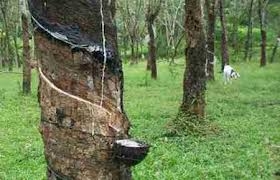Rubber sector needs to bend with the times
 To cultivate the local rubber industry’s growth, the prime minister rubber-stamped Decision 750/QD-TTg outlining rubber industry development planning to 2015, with vision towards 2020.
To cultivate the local rubber industry’s growth, the prime minister rubber-stamped Decision 750/QD-TTg outlining rubber industry development planning to 2015, with vision towards 2020.
Under the decision, by 2015 Vietnam was expected to host 800,000 hectares of rubber fields and post 1.2 million tonnes of rubber latex, according to Vietnam Rubber Association (VRA).
General Statistics Office figures show that in 2011 there was 834,200ha of rubber fields in Vietnam, outpacing the target set for 2015, generating over 1.2 million tonnes of rubber latex. The rubber area is forecast to hit 900,00ha generating an estimated 1.4 million tonnes of latex in 2012.
“These figures show that Vietnam possesses natural rubber sources which are vital to future rubber industry development,” said VRA’s office chief Tran Thi Thuy Hoa.
Industry experts, however, assumed several thorny problems persisted.
First, albeit Vietnam ranks fifth worldwide in respect to natural rubber output and fourth in natural rubber export volume, made-in-Vietnam rubber products remain monotonous. Tires account for around 70 per cent of total products, with the remainder being simple items like rubber gloves, carpets or mattresses.
Tire production sector in Vietnam began developing from the 1990s only and had yet to turn out competitive complex items serving motorbike and auto industries, said Ho Chi Minh City Plastic Rubber Association chairman Nguyen Quoc Anh.
Tire-makers are only in a position to satisfy local consumption for motorbike and small van tires whereas up to 50 per cent of truck and passenger car tires need to be imported.
Second, unhealthy competition exists between domestic and foreign direct investment (FDI) capital businesses. That is because FDI firms positioned in Vietnamese export processing and industrial zones benefit from some tax incentives, whereas local firms do not, badly affecting the competitiveness of made-in-Vietnam rubber items.
Experts assumed Vietnam could grow into not only a top natural latex supplier but also potential major rubber item maker in the not distant future, given the country’s huge latex output and relatively stable product price of around $3,000 per tonne.
What the stars mean:
★ Poor ★ ★ Promising ★★★ Good ★★★★ Very good ★★★★★ Exceptional
Related Contents
Latest News
More News
- Public-private partnerships a lever for greener innovation (April 22, 2025 | 14:44)
- Unlock transport potential to accelerate Mekong Delta growth: PM (April 22, 2025 | 11:34)
- AEON Vietnam breaks ground on new project in Hai Duong (April 21, 2025 | 11:56)
- Haiphong private sector emerges as key engine of economic growth (April 21, 2025 | 11:44)
- Highlands Coffee opens roastery in Ba Ria – Vung Tau (April 21, 2025 | 08:07)
- Hoa Phat Group breaks ground on high-grade steel and railway track plant (April 18, 2025 | 11:50)
- Vietnam - an exception in terms of FDI attraction (April 17, 2025 | 11:56)
- WB and ADB provide $400 million for three projects in Vietnam (April 17, 2025 | 11:06)
- Danang FTZ policy drives investment surge (April 17, 2025 | 11:02)
- Private sector clarity of regulations a must (April 17, 2025 | 10:13)

 Tag:
Tag:
















 Mobile Version
Mobile Version